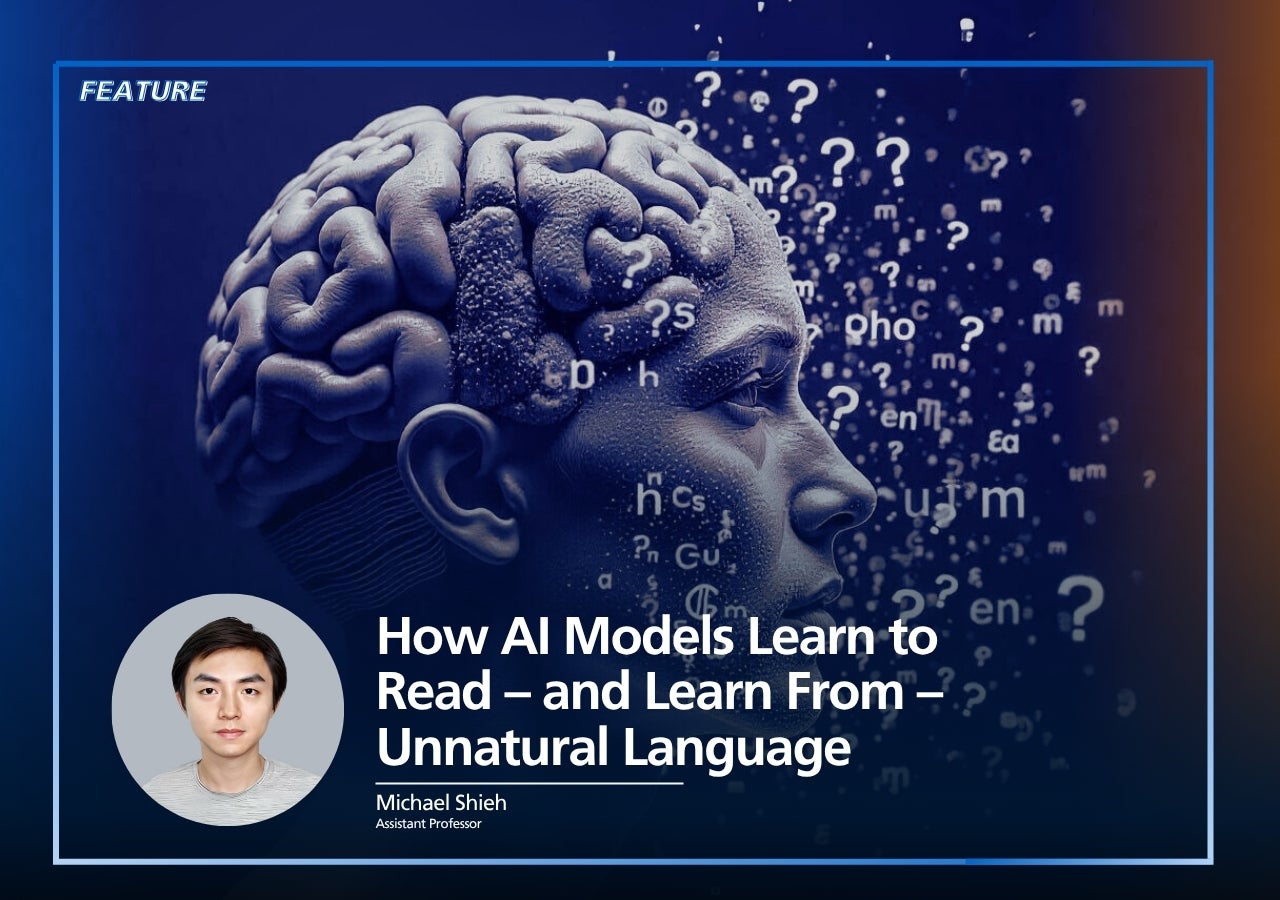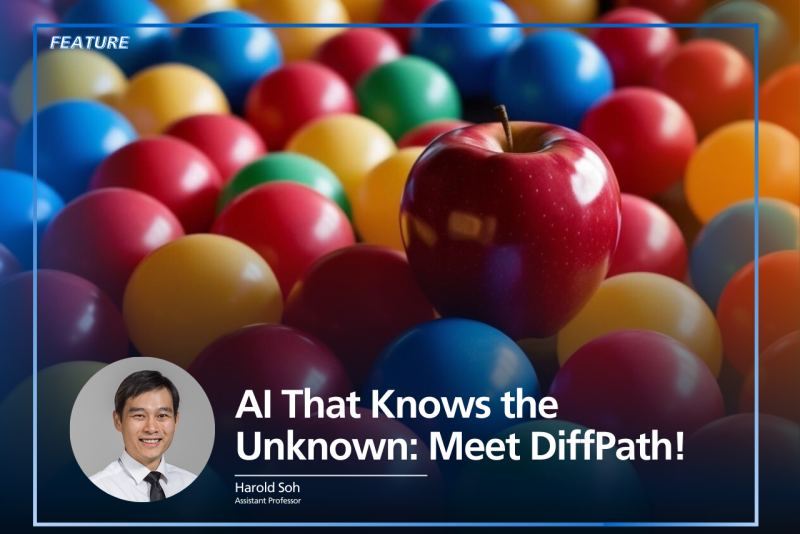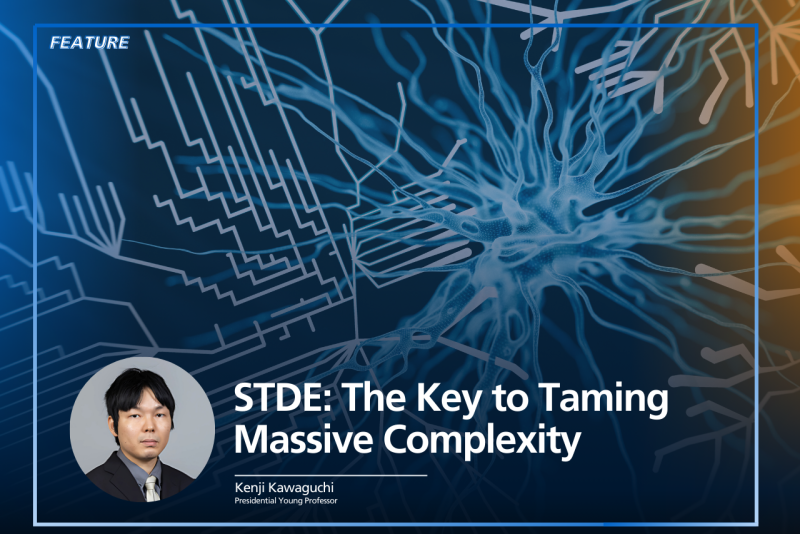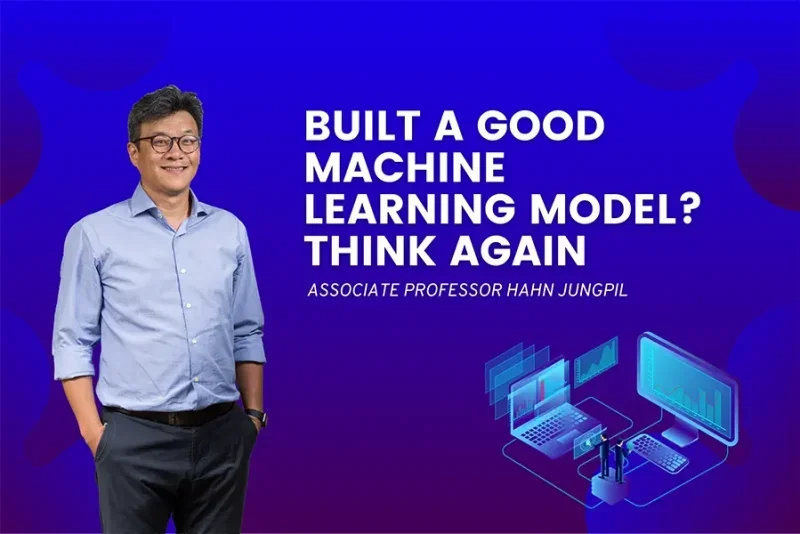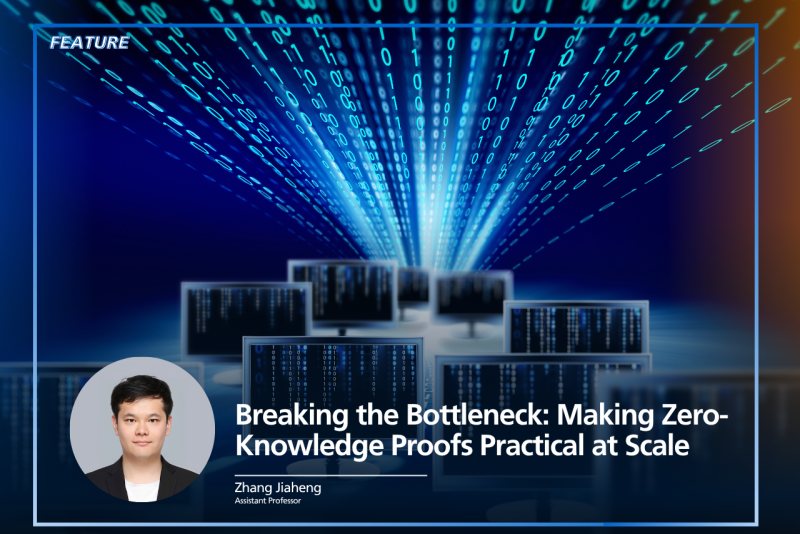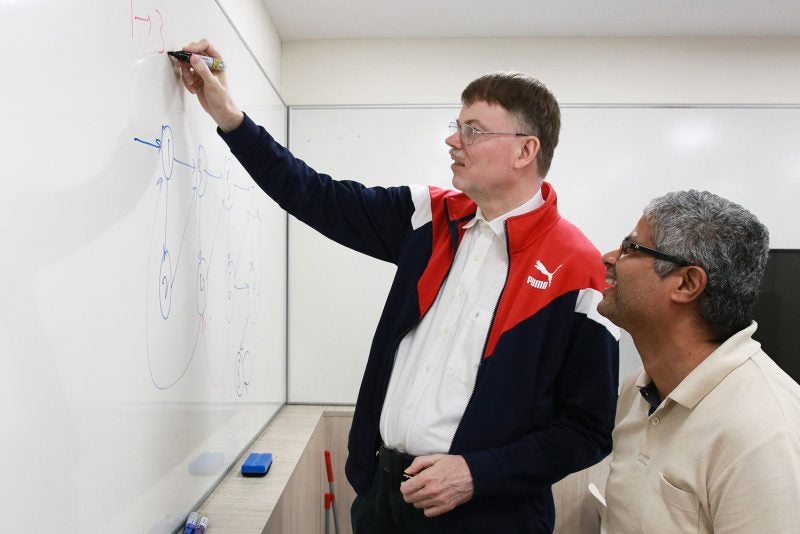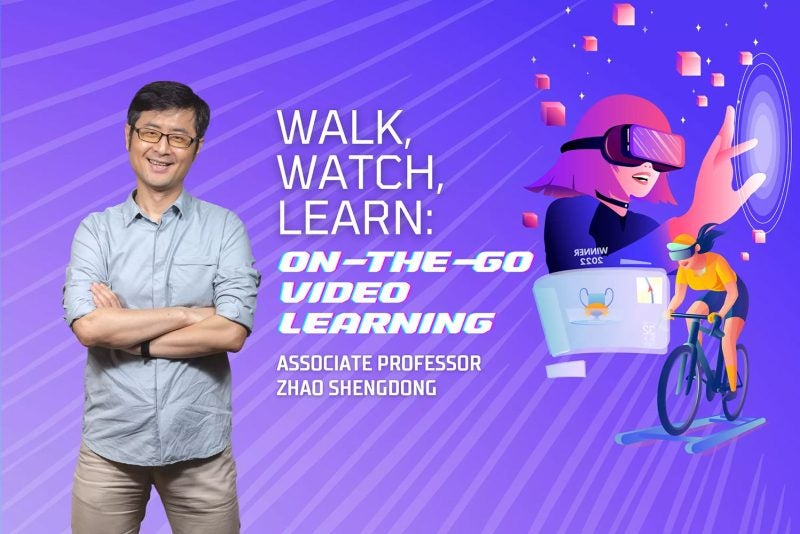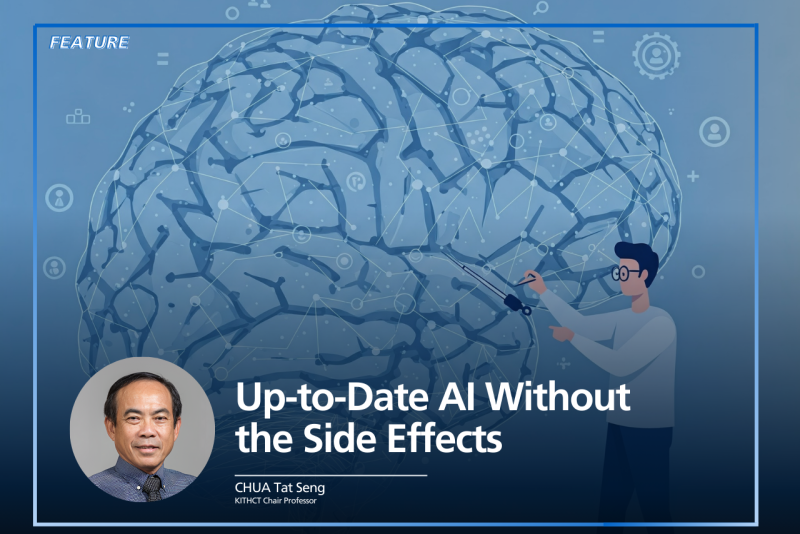When Gibberish Isn’t Garbage:
How AI Models Learn to Read – and Learn From – Unnatural Language
Imagine a sentence that looks like a keyboard smash: symbols, broken syntax, misspelt words, stray punctuation. To you and me, it’s noise – utterly unreadable. But what if I told you that an AI language model can not only read it, but also understand it, answer questions based on it, and even learn general skills from it?
That’s the radical proposition at the heart of a recent research breakthrough by Assistant Professor Michael Shieh at NUS Computing. While the AI world has long treated “unnatural language” – strings of characters that don’t resemble any human grammar – as side effects, bugs, or even exploits (remember those old “jailbreak” prompts?), Shieh has turned that assumption on its head. Their central claim? These strange strings aren’t meaningless accidents. In fact, they may represent hidden, latent features that large language models (LLMs) can not only comprehend but use as tools for learning and reasoning.
This discovery doesn’t just tweak how we think about prompt engineering or robustness testing. It opens up a deep rethinking of what “language” means to an AI – and how radically different that might be from our own understanding.
The Mystery of UNnatural Language
What is unnatural language, exactly? In this context, it refers to text strings that look like gibberish to humans – no recognizable words, no grammar, no logical syntax. Think strings like:
(alt+eqn={\\>; {};The\\,\\stock baaelkrie@nuier priceungeureau got sich last ’#GM;;heidisation Inc. weekestig %}20% durch’),png encrypt render \”OK Gold-Mine.”,preventDefault
This is the distorted form of a very ordinary sentence:
The stock price of Goldmine Inc. increased by 20% last week.
In another case, a simple math word problem:
Carly collected 7 starfish with 5 arms each and one seastar with 14 arms
…becomes something like:
|Each and : algebra dinner! absolutely 7 do): shortly . seastar collectedthe ‘’ kW)$, one !5 ! 14‘ starfish with sic}}_{\label Carly} arms. Onehorailey constructed WriteStatus($$\Toggle Zwezeichnung OK
To a human, this is noise. But to an LLM? It’s something else entirely.
From Bugs to Features: A Shift in Perspective
Historically, prompts like these surfaced in strange contexts, such as adversarial attacks or jailbreak exploits. But researchers often dismissed them as odd byproducts of LLM training. The new study flips this view: what if these sequences are meaningful artifacts that the model can tap into?
Shieh’s team developed a method to systematically generate unnatural language. This wasn’t random character mashing. Using a gradient-based sampling technique, they trained models to find unnatural strings that were semantically equivalent to natural ones. In other words, the model could “read” the gibberish and translate it back to the original message with high probability.
Then they tested the real question: could LLMs use these strings to answer questions, solve problems, or learn instructions? The answer, surprisingly, was yes.
Reading the Unreadable: Comprehension Experiments
To rigorously test whether LLMs genuinely understood unnatural language (and not just pattern-matched), the researchers set up context-question answering tasks. Here’s the twist: the context was given in unnatural language, but the question was posed in plain English. The model had to extract the relevant information from the gibberish to answer correctly.
To eliminate the possibility of memorisation or reliance on background knowledge, they built a synthetic dataset, SynContextQA, filled with made-up facts and entities. This ensured the model couldn’t cheat by recalling known information – it had to comprehend the provided text.
The results? LLMs achieved 82% of their natural-language accuracy when reading the gibberish context. That’s nearly full comprehension, despite the text being completely unintelligible to humans.
On simpler math problems from a dataset called SimGSM8K, models reached about 61.6% accuracy – lower, but still far above chance and substantially outperforming a control group trained on shuffled, random strings.
Not Just Reading – Learning From Unnatural Language
Here’s where things get even more surprising.
The team asked: what happens if we train a model using instructions written in unnatural language? Not just test comprehension, but actually try to fine-tune general instruction-following behavior.
Using a dataset called LIMA, which contains 1,000 high-quality instruction-answer pairs, they replaced all natural instructions with their unnatural equivalents and fine-tuned various LLMs.
Then they benchmarked performance against models trained on the original natural LIMA.
The result? The unnatural-trained models performed on par with their natural-trained counterparts, achieving nearly 50/50 win rates in head-to-head tasks. That is, models trained on what looks like gibberish were just as capable of following instructions as those trained on clear English.
This indicates that instructional learning is not dependent on human-readable syntax, as long as the underlying patterns and semantic structures are preserved.
How Are They Doing This?
The natural question: how can a model read and learn from noise?
The researchers uncovered two key mechanisms at work:
- Keyword Extraction
First, LLMs are surprisingly good at filtering noise. The researchers analysed which tokens mattered most by measuring how much the model’s output changed when each token was removed. They found that:
- Tokens corresponding to key concepts from the original sentence (names, actions, quantities) had high importance scores.
- The rest – the gibberish – was effectively ignored.
The model isolates the signal from the noise, even when both are mashed together.
- Contextual Reassembly
But finding keywords isn’t enough. The words are out of order, sometimes with inverted syntax or conflicting punctuation. How does the model infer meaning?
Here, the natural-language question prompt plays a crucial role. It provides semantic scaffolding, helping the model reconstruct relationships between the keywords it extracted.
For example, if the context is jumbled but contains “twice,” “Brandon,” “sold,” “geckos,” the question “How many geckos did Brandon sell the year before?” allows the model to infer the proper relationships – Brandon sold twice as many geckos the previous year – and compute the answer.
Internal representation analysis supports this. Embedding similarity studies showed that the model dynamically restructures its internal understanding once the natural-language question is introduced. It’s not memorising the unnatural string – it’s transforming it in real-time, based on the task.
Unnatural Language Isn’t Random – It’s Structured
Importantly, the researchers compared this to a control condition where words were randomly shuffled and special tokens added. Models did significantly worse in this condition than with systematically generated unnatural strings.
That confirms that these unnatural languages contain structured, learnable patterns, not just randomness.
Dependency parsing analysis even showed that models can infer syntactic relationships – subject, verb, object – from jumbled input. That’s a level of language understanding far beyond keyword spotting.
Why This Matters: Implications for AI Research and Applications
So why does this matter? What are the practical takeaways?
- Rethinking AI Robustness and Generalisation
This research suggests that LLMs are more robust and flexible than previously assumed. They don’t rely solely on human-readable syntax to process language. Instead, they tap into deeper statistical and semantic patterns.
This challenges our assumptions about what “language” even is, from a model’s perspective. - New Avenues for Adversarial Testing
Understanding how models parse unnatural language could inform better security and jailbreak detection, especially in high-stakes applications where AI misbehaviour is a concern. We now know these prompts aren’t flukes – they’re features. - Low-Resource Training Alternatives
Imagine training an LLM in situations where clean, natural text is unavailable, but corrupted, abbreviated, or obfuscated text exists. This opens the door to low-fidelity learning environments, especially in low-resource languages or edge-device scenarios. - Steganography and Encrypted Prompts
The fact that models can learn from unreadable input suggests potential in covert communication channels, both for good (private, compact instruction formats) and ill (malicious prompt hiding). We’ll need new ways to audit and interpret what models are being told. - AI Alignment and Interpretability
Ultimately, this pushes the frontier of AI interpretability. It’s no longer enough to look at input-output pairs. We need to understand the abstract representational geometry that lets models decode gibberish as meaning, and decide what they’re really “learning.”
Final Thought: What Is Language to a Machine?
This research poses a philosophical challenge as much as a technical one.
If LLMs can extract meaning from what looks like static to us – if they can learn to follow instructions written in a non-language – then the “language” they understand isn’t really ours at all. It’s something deeper, stranger, more mathematical. Less about grammar, more about embedded structure and relational inference.
It’s a reminder that these systems, trained on the sum of human text, are not humans. Their understanding of language is alien – not worse, not better, just profoundly different.
And as we build ever more powerful models, we’ll need to grapple with this gap. Not just how we teach them to speak, but how they actually listen.
Because sometimes, the clearest signal is hiding in the noise.
Further Readings: Duan, K., Zhao, Y., Feng, Z., Ni, J., Pang, T., Liu, Q., Cai, T., Dou, L., Kawaguchi, K., Goyal, A., Kolter, J.Z., Shieh, M.Q. (2025) “Unnatural Languages Are Not Bugs but Features for LLMs,” 42nd International Conference on Machine Learning (ICML 2025), Vancouver, Canada DOI: 10.48550/arXiv.2503.01926

